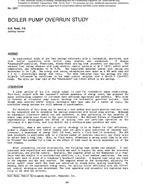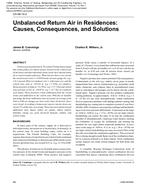The field of TAB as we know it today is relatively young. It’s not much more than 10 years old. Prior to that time, the majority of HVAC systems were started-up, tested, adjusted and balanced by the installing contractor. He usually had several of his better servicemen or mechanics handle the chore. In general they did an adequate job, consistant with the state-of-the-art at that time. But 10 years ago some significant changes took place. Computers were introduced in the design and control of HVAC systems. Equipment designs were optimized by computer and safety factors were minimized. As a result, the old TAB procedures and techniques were no longer adequate.
As might be expected, field problems were encountered. Concern developed among engineers and owners that contractors were not installing the systems and equipment in accordance with the engineer’s design. Where the contractor performed whatever tests were specified, the reported results were treated with scepticism. When operating problems were encountered, the design engineer pointed his finger at the contractor and the contractor pointed back at the designer. Frequently, both had good reasons for their accusations.
At this point, a number of national organizations, including ASHRAE, studied TAB with renewed interest. Several things resulted:
- A realization that certain provisions for TAB had to be designed into a system.
- The development of formal TAB procedural standards for performance of the work.
- The evolution of today’s TAB professional.
The new outlook on TAB shifted emphasis from the contractor to the designer and the balancer.Checklists and guide specs were developed for the designer. Recommended TAB procedures weredeveloped for the balancer. Little was done about the installing contractor. Yet, engineersand owners continue to look to the installing contractor to be responsible for making everythingwork as designed. This paper presents some recommendations (Dos and Don’ts) for both the installingcontractor and the overall mechanical contractor in the event that they are not thesame company. The mechanical contractor is responsible for the overall mechanical system includingits successful installation, operation, and its testing, adjusting, and balancing. Aninstalling contractor is responsible for one or more of the various elements of an HVAC systemsuch as the ductwork, the piping, equipment, controls, thermal insulation, or other related.trades.
Citation: Symposium, ASHRAE Transactions, Volume 85, Part 1, Philadelphia, PA
Product Details
- Published:
- 1979
- Number of Pages:
- 8
- File Size:
- 1 file , 500 KB
- Product Code(s):
- D-PH-79-13-3


